
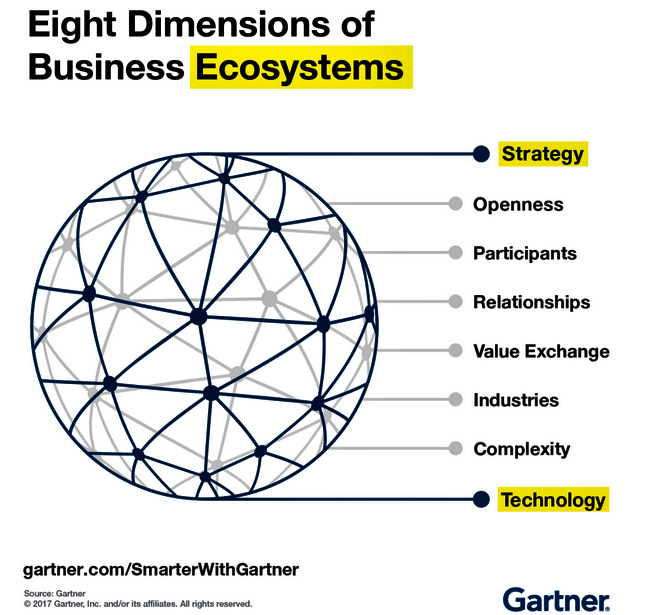
As the business world grows in complexity, the need for an organisation to optimise its business ecosystem grows. At the end of the day, a business needs to add value for its customers, employees, and the broader society, as represented by key stakeholders.
It can be argued that the dominant company format in the world is shifting from platform or digital economy companies to ecosystem companies. A business ecosystem can be defined as “A dynamic and largely independent set of players that complement each other to create interconnected offerings which have more value when consumed as one integrated experience.” (ecosystemizer.com).
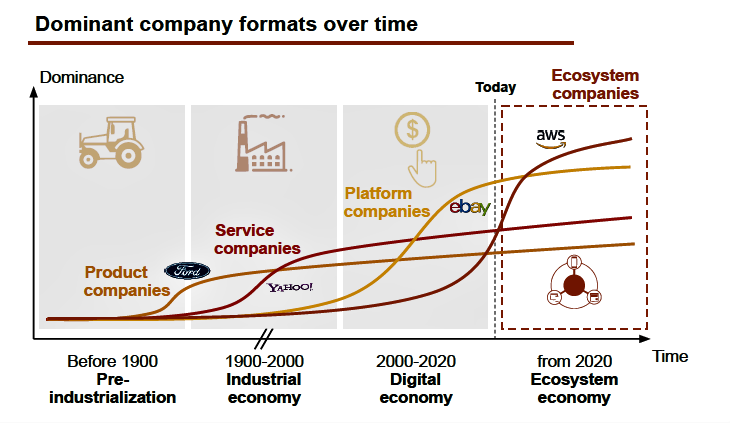
Gartner (gartner.com) identifies eight areas making up an organisation’s business ecosystem (see diagram above):
Each of these eight areas requires careful consideration. Who are we going to partner with? In some cases, these will be partnerships internal to the organisation. Careful attention must be paid to ensuring that silo-thinking does not interfere with the quality of the service we provide our customers. Where external partnerships are concerned, careful attention must be paid to who we partner with, what value we exchange with them, and how open our partnering system is.
Every organisation needs to add value for its customers, or it will ultimately cease to exist. In looking at human dimensions for customers, ten dimensions or life areas can be identified (ecosystemizer.com).
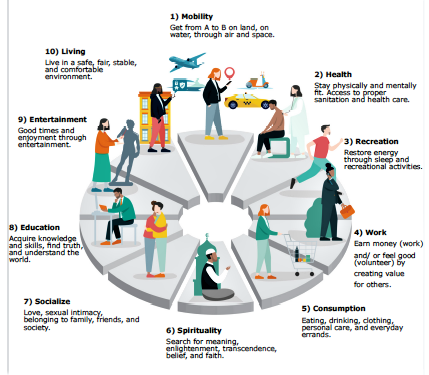
While an individual organisation may focus on one or two areas, a national government or society must address all ten. Often these areas are addressed in a country’s constitution. The emphasis on each may vary over time and depend on the values of a particular society. Most societies pay particular attention to Education, Health, and Living.
To optimise our business system, we need a framework and metrics. In many countries, this is provided through an excellence framework. The best-known is the EFQM Excellence Model, used in over 50 countries worldwide (efqm.org).
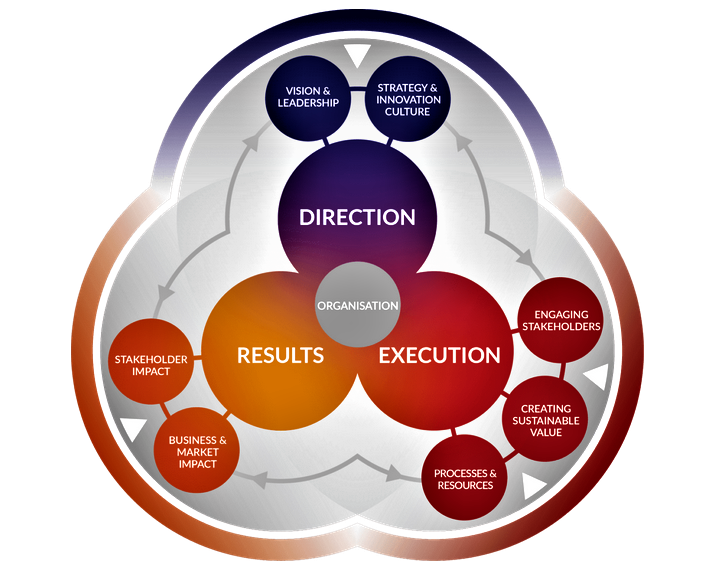
The model identifies three core elements – Direction, Execution, and Results. Direction is derived from Vision & Leadership together with Strategy & Innovation Culture. Execution focuses on Engaging Stakeholders, Creating Sustainable Value, and optimising Processes & Resources. Finally, Results measure Stakeholder Impact and Business & Market Impact.
We achieve a desirable outcome for an organisation or society when our Business Ecosystem ensures optimal results for each Life Area we target for our customers or citizens. Also, where our standards of excellence ensure we stay focused and continue to consistently deliver against the set standard.
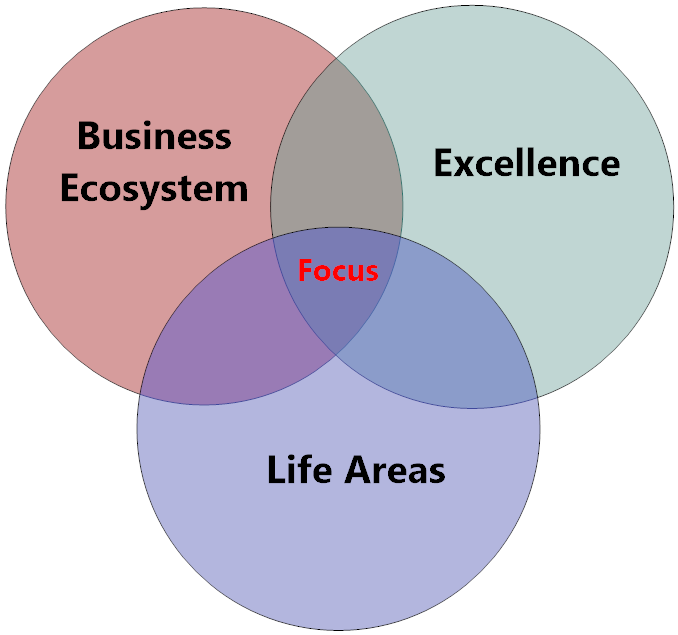

Need to revisit your business ecosystem to see how well it is meeting the needs of your customers? We can help you conduct a review of how well your ecosystem is performing while relating it to the customer Life Areas you are serving. And, we can work with you to ensure excellence is measured and delivered.